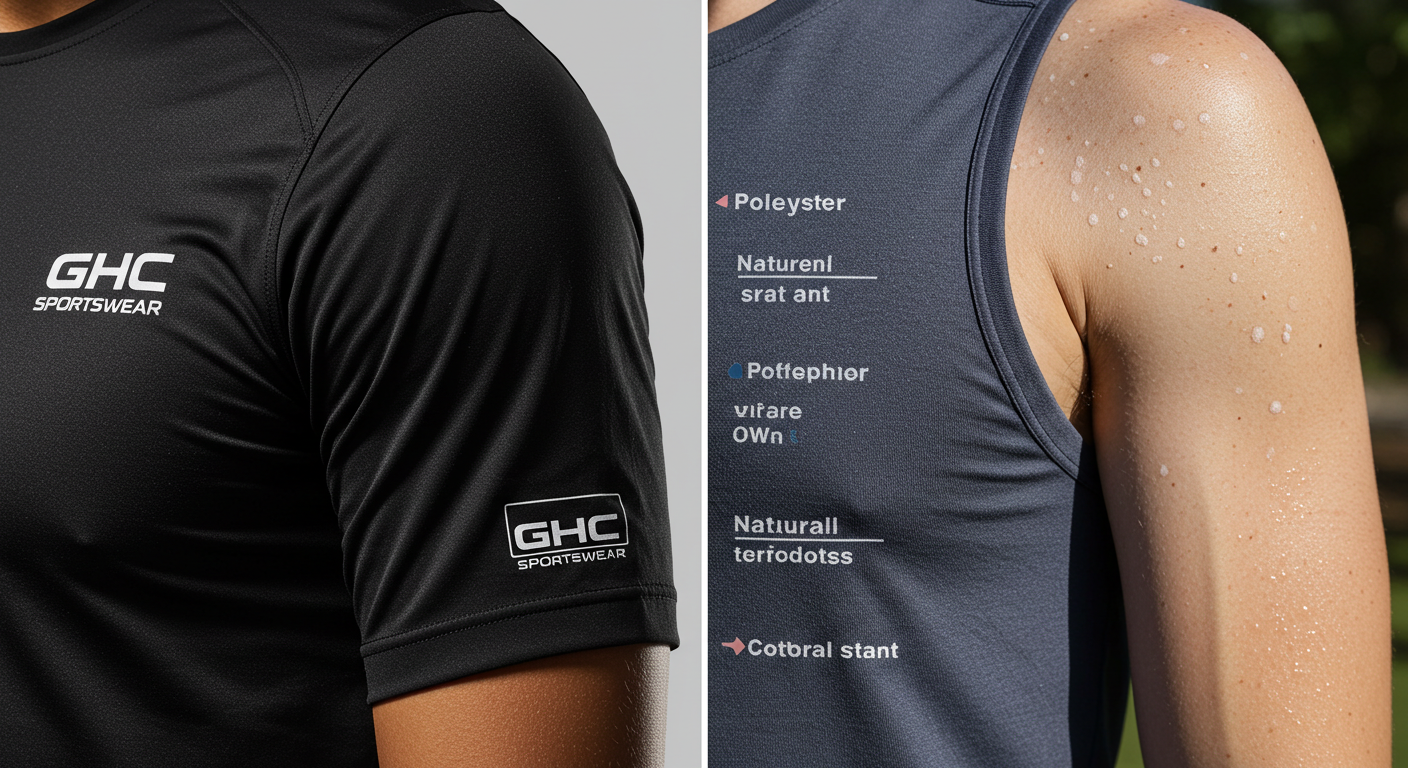
The debate over synthetic vs. natural fabrics in sportswear has been ongoing for years. Some athletes prefer the breathability of natural fabrics, while others favor the durability and moisture-wicking abilities of synthetics. In this article, we’ll debunk common myths about these fabrics and help you choose the best material for your athletic wear.
Understanding Synthetic Fabrics in Sportswear
Synthetic fabrics, such as polyester, nylon, spandex, and acrylic, are man-made materials designed for specific functions. These fabrics are prized for their durability, moisture-wicking properties, and elasticity.
1. Myth: Synthetic Fabrics Lack Breathability
A common myth is that synthetic fabrics trap heat and lack breathability compared to natural fibers like cotton. While this can be true for some older synthetic materials, modern advancements have produced breathable synthetics. For instance, polyester and nylon blends wick moisture away from the body, allowing sweat to evaporate and keeping athletes cool.
2. Myth: Synthetic Fabrics Are Uncomfortable
Another myth is that synthetic fabrics feel uncomfortable during workouts. However, many synthetic materials are engineered for comfort. Spandex, for example, provides stretch and support, enabling a full range of motion. Additionally, modern synthetics often rival natural fabrics in softness, making them a comfortable option for athletes.
3. Myth: Synthetic Fabrics Cause Skin Irritation
Some believe synthetic fabrics are more likely to irritate the skin. While this can happen to those with specific sensitivities, most synthetic sportswear is hypoallergenic and treated to minimize irritation. The key is selecting high-quality synthetics free from harmful chemicals.
The Role of Natural Fabrics in Sportswear
Natural fabrics like cotton, wool, and bamboo have been used in clothing for centuries. In sportswear, these materials are often celebrated for their comfort, breathability, and eco-friendliness.
1. Myth: Natural Fabrics Are Always Eco-Friendly
Many assume natural fabrics are more eco-friendly than synthetics. While they are biodegradable and renewable, the production process for cotton, for instance, can be resource-intensive, requiring significant water, pesticides, and land. Meanwhile, some synthetic fabrics are now made from recycled materials, offering a sustainable alternative.
2. Myth: Natural Fabrics Always Offer More Comfort
Natural fabrics are often associated with comfort, but they don’t always outperform synthetics in this regard. Cotton, for example, is soft and breathable but tends to retain moisture, which can lead to discomfort during prolonged physical activity. On the other hand, synthetic fabrics like polyester wick moisture away, keeping athletes dry.
3. Myth: Natural Fabrics Are More Durable
While natural fabrics are comfortable, they may not be the most durable choice for sportswear. Cotton and wool can wear out quickly with frequent washing and high-intensity use. Synthetic fabrics, however, are designed to withstand rigorous athletic activity, often lasting longer than their natural counterparts.
Choosing the Right Fabric for Your Needs
When deciding between synthetic vs. natural fabrics in sportswear, consider your specific needs and the type of activity. Here’s a guide to help you choose:
1. For High-Intensity Workouts
For activities involving a lot of sweating and requiring maximum flexibility, synthetic fabrics like polyester or nylon blends are often the better choice. These materials wick moisture away, dry quickly, and provide the stretch needed for dynamic movements.
2. For Low-Intensity or Casual Activities
If comfort is your top priority and you’re engaging in low-intensity activities, natural fabrics like cotton or bamboo may be ideal. These fabrics offer breathability and softness, making them perfect for yoga, walking, or casual wear.
3. For Outdoor Activities
When participating in outdoor sports, especially in varying weather conditions, a combination of synthetic and natural fabrics might be best. Layering with a moisture-wicking synthetic base and a natural fabric outer layer can provide comfort and protection from the elements.
Conclusion: The Truth About Fabrics in Sportswear
The debate between synthetic vs. natural fabrics in sportswear ultimately depends on personal preference and the specific needs of the activity. Both fabric types have their advantages and can perform well when chosen for the right purpose. By debunking these myths, we hope to help you make an informed decision that enhances your athletic performance and comfort.
